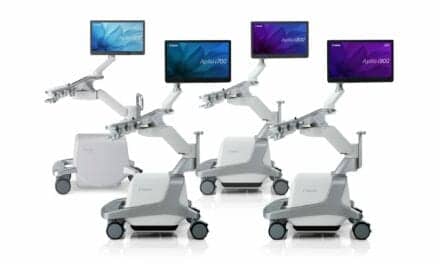 A convergence of factors — akin to a realignment of the stars — has propelled positron emission tomography (PET) into the spotlight of the medical imaging world.
A convergence of factors — akin to a realignment of the stars — has propelled positron emission tomography (PET) into the spotlight of the medical imaging world.
Michael Oberhofer, M.D., medical director of the Advocate Medical Group Imaging Center in Park Ridge (Ill.) describes a dramatic increase in the volume of PET imaging studies in their site and across the country. He credits a number of factors in expanding the number of their PET referrals. With reimbursement a key element in development of functional imaging applications to this point, the addition of new clinical indications to the payment stream promises to dramatically increase the use of PET in the future. Also, technologic advances in PET imaging systems have improved image resolution and simultaneously reduced the amount of time required to complete a full-body PET scan.
Reimbursement issues
The Society of Nuclear Medicine (Reston, Va.) has been in the thick of the reimbursement issue over a particularly tumultuous period. William Uffelman, Esq., director of public affairs and general council for SNM, describes a series of negotiations with CMS (Centers for Medicare and Medicaid Services, formerly HCFA) that finally led to PET study reimbursement levels of $1,764 per study including a passthrough reimbursement for the radiopharmaceutical agent fluorodeoxyglucose (FDG).
Although CMS reimbursement for FDG PET has been in place for several oncologic applications, new approval guidelines allow payment for these scans for staging patients with breast cancer. Given that more than 150,000 women will be diagnosed with breast cancer this year, the volume of PET scans is expected to rise significantly. With reimbursement for diagnosis and follow-up evaluation under current CMS consideration for use in patients with dementia, and Alzheimer’s disease, the number of PET scans could escalate over the next several years.
Another reimbursement issue that will boost the use of PET is the fact that only gamma camera studies performed on equipment with a crystal 5/8” or thicker will be reimbursed for indications approved prior to Dec. 15, 2000. The CMS conclusion was based on evidence that gamma cameras may not detect a significant number of lesions that were two centimeters or less in size, although they recognize that they did not include images produced by newer systems.
Please refer to the June 2002 issue for the complete story. For information on article reprints, contact Martin St. Denis





